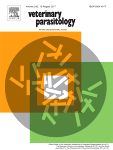Ver ítem
- xmlui.general.dspace_homeCentros Regionales y EEAsCentro Regional Buenos Aires SurEEA Cuenca del SaladoArtículos científicosxmlui.ArtifactBrowser.ItemViewer.trail
- Inicio
- Centros Regionales y EEAs
- Centro Regional Buenos Aires Sur
- EEA Cuenca del Salado
- Artículos científicos
- Ver ítem
Frequency of Neospora caninum infections in beef cow–calf operations under extensive management
Resumen
The aim of this study was to evaluate the frequencies of Neospora caninum horizontal and vertical transmissions in beef cow–calf operations under three different extensive management systems: group A: 0.75 head per hectare pasturing on natural grass; group B: 1.1 head per hectare on natural grass and improved cultured pastures; and group C: 2 head per hectare on natural grass, improved cultured pasture and whole corn silage. Serum samples from 72
[ver mas...]
The aim of this study was to evaluate the frequencies of Neospora caninum horizontal and vertical transmissions in beef cow–calf operations under three different extensive management systems: group A: 0.75 head per hectare pasturing on natural grass; group B: 1.1 head per hectare on natural grass and improved cultured pastures; and group C: 2 head per hectare on natural grass, improved cultured pasture and whole corn silage. Serum samples from 72 multiparous cows assigned to each beef cow–calf operations were obtained every 3 months during 2 years. A group of 30 replacement heifers from each group were tested similarly since they were 10–21 months old. Twenty four, 20 and 34 calves from groups A, B and C respectively, were bled before colostrum intake and again 6 months later. The samples were analyzed by indirect fluorescence antibody test (IFAT) for detection of total IgG against N. caninum at a serological titre ≥200 for multiparous cows and replacement heifers, and a serological titre ≥25 for calves. Serum samples from seropositive cows were assessed by ELISA to evaluate the avidity of their specific antibodies. There were no differences in the proportion of seropositive cows from groups A, B and C at the beginning of the trial (p > 0.05). Interestingly, the lowest serological titres in seropositive cows from all groups were observed during the first trimester (p < 0.05). Although seropositive cows had medium to high avidity antibodies, suggesting chronic infection; seroconversion associated with low antibody avidity was found in 2, 3 and 3 seropositive cows from groups A, B and C. All replacement heifers remained seronegative. No abortions were recorded but 2, 1, and 2 calves from groups A, B and C were seropositive before colostrum intake, respectively. Seropositive calves born from cows having intermediate or high avidity remained with the same serostatus at 6 months of age. Even under varying extensive management conditions, both N. caninum horizontal and vertical transmission methods do occur in beef cow–calf operations.
[Cerrar]

Autor
Rodriguez, Alejandro Martin;
Maresca, Sebastian;
Cano, Dora Beatriz;
Armendano, Joaquín Ignacio;
Combessies, Gustavo;
Lopez Valiente, Sebastian;
Odriozola, Ernesto Raul;
Spath, Ernesto Juan;
Odeon, Anselmo Carlos;
Campero, Carlos Manuel;
Moore, Prando Dadin;
Fuente
Veterinary Parasitology 219 : 40-43 (March 2016)
Fecha
2016-03-30
ISSN
0304-4017
Formato
pdf
Tipo de documento
artículo
Palabras Claves
Derechos de acceso
Restringido
 Excepto donde se diga explicitamente, este item se publica bajo la siguiente descripción: Creative Commons Attribution-NonCommercial-ShareAlike 2.5 Unported (CC BY-NC-SA 2.5)
Excepto donde se diga explicitamente, este item se publica bajo la siguiente descripción: Creative Commons Attribution-NonCommercial-ShareAlike 2.5 Unported (CC BY-NC-SA 2.5)

